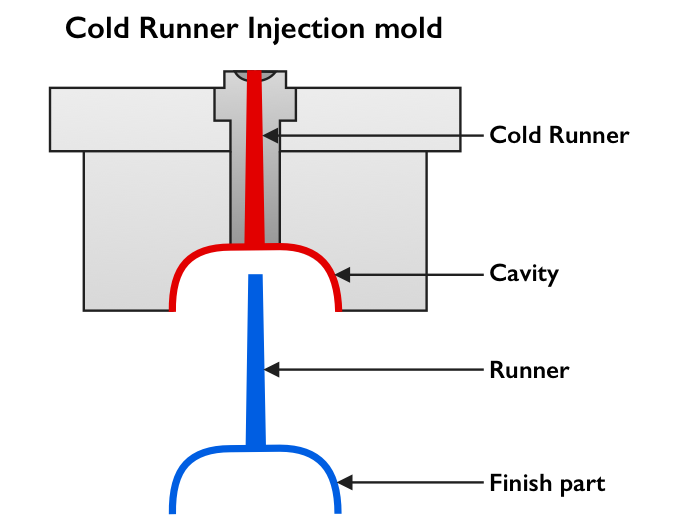When it comes to injection molding, choosing the right type of mold is crucial for achieving efficient and high-quality production. Two commonly used mold systems in the industry are hot runner molds and cold runner molds. Both options offer their own set of advantages and considerations, and understanding their differences is essential for making an informed decision. In this article, we will delve into the disparities between hot runner and cold runner molds, highlighting their characteristics, benefits, and drawbacks.
Hot Runner Molds

Advantages of Hot Runner Molds
Reduced Material Waste: Hot runner molds minimize material waste since there is no sprue or runner to be ejected and discarded with each cycle. This leads to cost savings and higher efficiency.
Faster Cycle Times: Without the need to cool and solidify a runner system, hot runner molds enable faster cycle times, resulting in increased productivity and production output.
Improved Quality: Hot runner molds offer better control over the flow of molten plastic, reducing the likelihood of issues such as flow lines, weld lines, or gate blush. This results in improved part quality and consistency.
Versatility: Hot runner systems allow for more design flexibility, as they can accommodate multiple gates and complex part geometries. This flexibility makes hot runner molds suitable for a wide range of applications.
Considerations for Hot Runner Molds
Higher Initial Cost: Hot runner molds are generally more expensive upfront due to the additional components required, such as heaters, controllers, and manifold systems. However, the potential cost savings from reduced material waste and increased productivity can offset this initial investment in the long run.
Maintenance and Complexity: Hot runner molds are more complex than cold runner molds, requiring regular maintenance and skilled technicians to troubleshoot and repair any issues that may arise with the heated systems.
Cold Runner Molds
Cold runner molds, as the name suggests, utilize unheated channels (runners) to deliver molten plastic to the mold cavities. The sprue, runner, and gate system solidify after each injection cycle and are ejected along with the part. This solidified material is then discarded or recycled.

Advantages of Cold Runner Molds
Lower Initial Cost: Cold runner molds are generally more affordable upfront, as they do not require the additional components and systems associated with heating the runners.
Simplicity and Maintenance: Cold runner molds are simpler in design and operation compared to hot runner molds. They are typically easier to maintain and repair since they do not involve heating elements or complex control systems.
Suitable for Large Parts: Cold runner molds are well-suited for larger parts where the solidified runner material can be reclaimed and recycled without significant cost implications.
Considerations for Cold Runner Molds
Increased Material Waste: Cold runner molds generate more material waste due to the necessity of ejecting and discarding the solidified runner system with each cycle. This can lead to higher material costs and reduced efficiency.
Longer Cycle Times: Cooling and solidifying the runner system between cycles increases the overall cycle time, resulting in slower production output compared to hot runner molds.
Limited Design Flexibility: The presence of a solidified runner system in cold runner molds can restrict design options, especially for complex part geometries or multiple gating locations.
Choosing the Right Mold
When deciding between hot runner and cold runner molds, several factors come into play. Considerations such as part complexity, desired production output, material costs, and overall project budget should guide the decision-making process. Hot runner molds excel in applications where reduced material waste, faster cycle times, and higher part quality are critical. On the other hand, cold runner molds are more suitable for projects where initial cost savings, simplicity, and recyclability of the runner material are important considerations.
Ultimately, selecting the appropriate mold system requires a thorough evaluation of the specific requirements and goals of the injection molding project. Consulting with experienced mold designers and manufacturers can provide valuable insights and help determine the best mold solution for your needs.
In conclusion, hot runner molds and cold runner molds offer distinct advantages and considerations. By understanding their differences and comparing their features, you can make an informed decision that aligns with your production requirements, quality standards, and cost objectives.
-q4gvl4k29y4hq8j9rjpapvj0ft06fje63olt7p210i.png)


